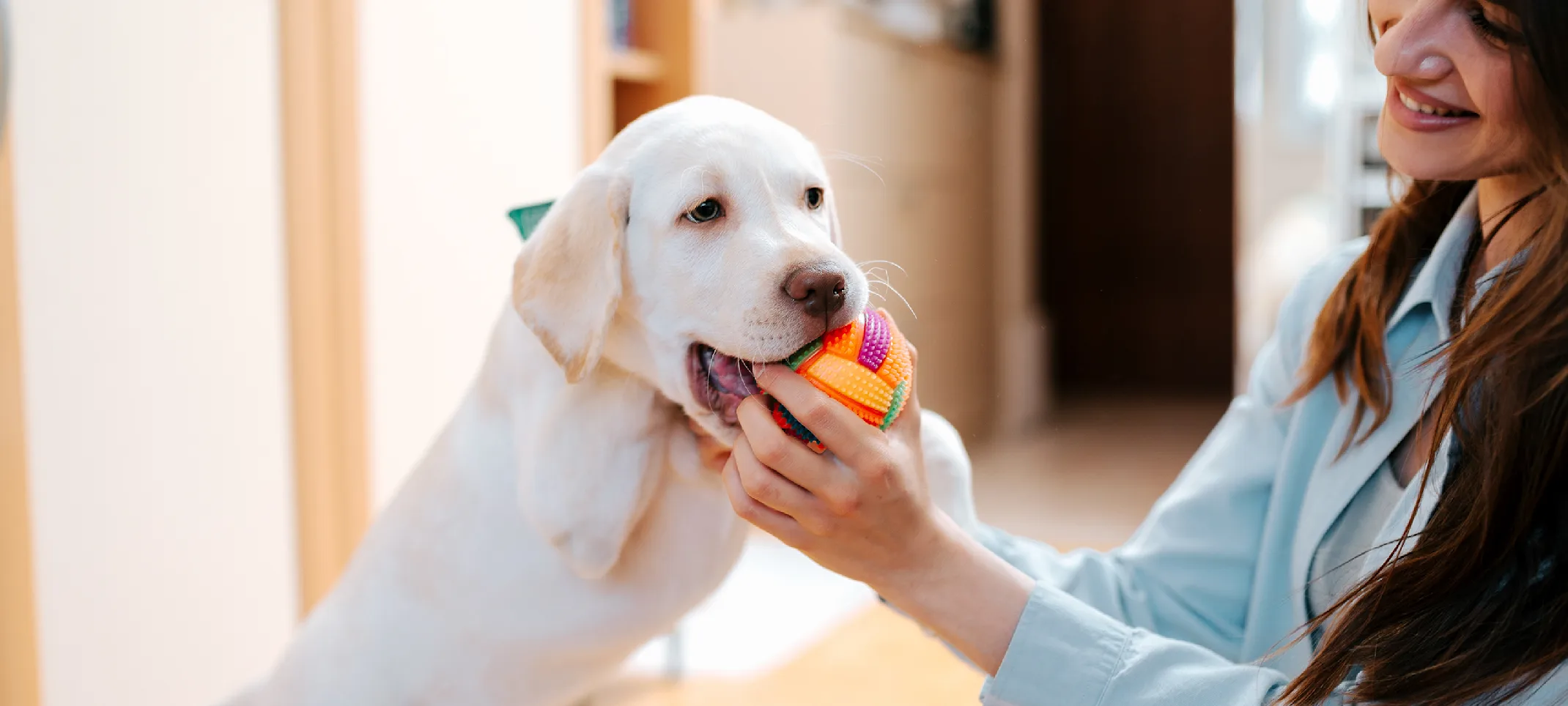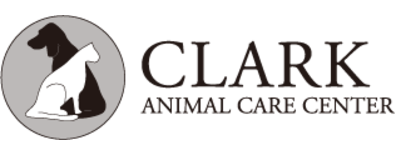Clark Animal Care Center
Kong Stuffing

Imagine hours of time, while your dog is blissfully entertaining itself, without barking, whining, digging, or other inappropriate behaviors!! Welcome to the Kong Toy!
The purpose of the Kong Toy, other than bouncing in wonderful and wacky ways when thrown, is to occupy your dog with two of its favorite tasks – chewing and eating. A dog that is doing something enjoyable cannot be barking, digging or destroying things at the same time, so Kong Toys make wonderful management tools for puppies and dogs alike. If used correctly, it can take a dog 1-2 hours of joyful chewing to unstuff a Kong Toy.
Ingredients Needed
The Kong Toy–size is based on the size of your dog and its ability to unstuff Kongs. Priced about $10 – $15 at most pet stores, these are much more economical than replacing your average couch, chair or table after your dog chews on them. Heck, you can buy ten of them to hide all over the house!
Wet Ingredients – Peanut butter, cream cheese, applesauce, liverworst, soft cheeses, etc.
Dry Ingredients – Dried fruits (not raisins) and vegetables, dog or cat kibble, pretzels, cereals, crackers, etc.
Moist Ingredients – Cheese, lunch meats, cooked rice, grains and pastas, canned dog foods, cooked meats and vegetables, breads, Oinkeroll/Rollover/Nature’s Balance (soft dog foods available in select pet stores and catalogs), etc.
Note - DO NOT use the following things to stuff a Kong Toy: Chocolate or caffeinated products, nothing in the onion/garlic family, grapes or raisins, macadamia nuts, or excessively fatty foods. These food items, while tasty, are toxic to your dog.
How to stuff a Kong Toy
Start by putting the most desirable food (which may vary from dog to dog) on the very bottom where your dog will be able to smell it through the small hole.
Next, smear the wet ingredients around the inside of the Kong. The wet ingredients help to stick all the other ingredients together!
Now take the dry ingredients and shove them down into the center of the Kong. These will cover the most desirable food, and stick to the wet ingredients.
The moist ingredients generally come last, and are used to smoosh all the other ingredients together. This layer is important to seal the large end of the Kong and keep the other ingredients from spilling out.
Warnings
If your dog is not used to eating people food, you may notice some soft stools. If this occurs, use primarily low fat foods and dog foods to start and then gradually add more varied foods later.
Test your dogs unstuffing abilities on a safe surface! Some dogs never make a mess, but others may drool or spread food around.
If your dog seems hesitant or uninterested at first – consider the following things:
Use foods they are familiar with to start.
Stuff the Kong lightly/easily at first; we want them to feel successful!
Decrease your dog’s daily meals (fed in a bowl) appropriately; we don’t want them over eating or gaining weight. In addition, if they aren’t hungry why would they want to work to get food from the Kong? Most dogs actually seem to prefer to eat from their Kongs, and sometimes regular meal feeding from a bowl can be phased out over time, having their total daily calories delivered in the Kong or other food enrichment toys.
Quick Kong Stuffing Ideas
A quick method of Kong stuffing would be to mix small cubes of cheese (about pea-sized) with dry dog kibble then stuff the Kong. Microwave for 10-20 seconds, and allow to cool. The cheese will melt enough to stick the kibble together, and when cooled will take your dog forever to get out!
Another method to consider is placing the Kong (small side down or sideways) on a cookie sheet, then fill it with Kool-Aid, juices or other liquids and freeze. Obviously, this is best used in the warm weather as an outdoor toy!
Kong Toys are dishwasher safe for easy cleaning.
Buster Cubes
Buster cubes are another type of enrichment toy that can be used to occupy your dog. These are filled with kibble or other dry ingredients only. The dog learns to roll it with its nose or paw to get to the scent of the food. As the cube is rolled, an occasional reward will tumble out, intermittently rewarding the dog for its effort. Once again, these work best if the dog is hungry. These were initially used as enrichment toys for pigs in feedlot situations to prevent boredom, aggression and other behavior problems, and have recently been adapted for use in dogs.
There are many other adaptations to the above toys available on the market. They are all recommended with the purpose of occupying your dog in an enjoyable and acceptable manner. This can help prevent, and sometimes treat, many of the behavior problems that dogs develop. Dogs like to do doggy things (digging, barking, chewing, running, jumping), but often in the human world in which they live, these behaviors are not acceptable for the majority of the day. When your dog has nothing to do it will improvise, and for many dogs this is their ticket to the shelter, or banishment to the basement or yard. Although these toys cannot completely substitute for aerobic activity and human companionship, the use of these toys can help give your dog an outlet for the times when it needs to be quiet and controlled.
